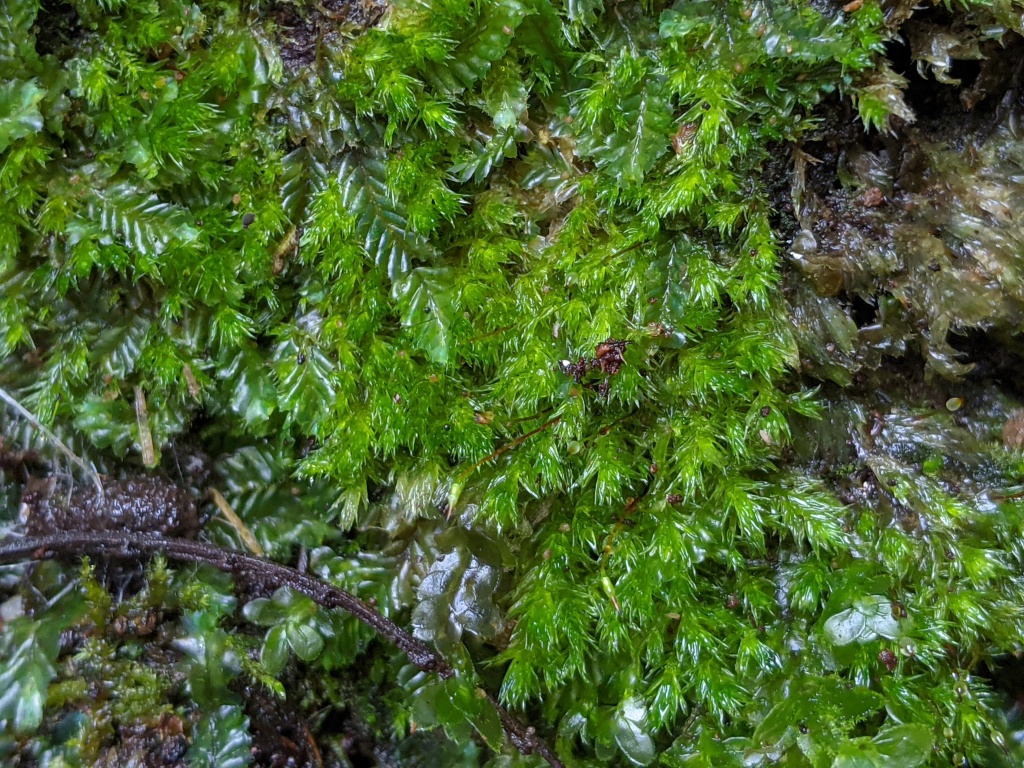Saulomataceae
Dioicous or autoicous (not in Victoria). Asexual reproduction by fusiform gemmae borne on elongate filaments in leaf axils. Mats on soil, rocks, stumps and logs. Stems sparingly or frequently (not in Victoria) branched, mostly weakly erect, with sparse pale rhizoids restricted to base and leaf axils; paraphyllia absent; pseudoparaphyllia absent; central strand absent. Leaves arranged around stem and facing all directions, monomorphic, densely imbricate, erect-spreading when moist, erect to erect-spreading, often secund and constricted and appearing narrower when dry; apex acuminate, without a hairpoint; costa short and double or absent; margin entire or sometimes with recurved teeth near apex (not in Victoria), recurved, without a border; laminal cells elongate-elliptic or linear-rhomboid, smooth; alar cells not differentiated. Pleurocarpous. Seta smooth. Capsule inclined to horizontal, symmetric, exserted, operculate. Calyptra mitrate or cucullate (not in Victoria), glabrous. Operculum rostrate. Peristome double; exostome of 16 teeth, not divided; endostome of 16 well developed segments, with a high basal membrane; cilia absent.
Three genera and species shared between Australia, New Zealand, Argentina and Chile; one genus and species in Victoria.
Sauloma was originally included in a broadly defined Hookeriaceae (Brotherus 1925). Phylogenetic analyses of chloroplast, mitochondrial and nuclear DNA sequences show Sauloma and the Chilean Ancistrodes Hampe to form a lineage that is most closely related to a lineage comprising the Daltoniaceae, a much narrower circumscription of Hookeriaceae, the Leucomiaceae, Pilotrichaceae and the Schimperobryaceae (Buck et al. 2005). Chilean Vesiculariopsis Broth. is also included within the Saulomataceae on the basis of its similar morphology, particularly its firm-walled, elongate elliptic or rhombic laminal cells that generally distinguish the Saulomataceae from the other Hookeriales (Buck et al. 2005).
 Spinning
SpinningBrotherus, V.F. (1925). Musci (Laubmoos), in Engler, A. (ed.), Die natürlichen Pflanzenfamilien, edition 2. Bd 11. Engelmann, Leipzig.
Buck, W.R.; Cox, C.J.; Shaw, A.J.; Goffinet, B. (2005). Ordinal relationships of pleurocarpous mosses, with special emphasis on the Hookeriales. Systematics and Biodiversity 2: 121–145.


